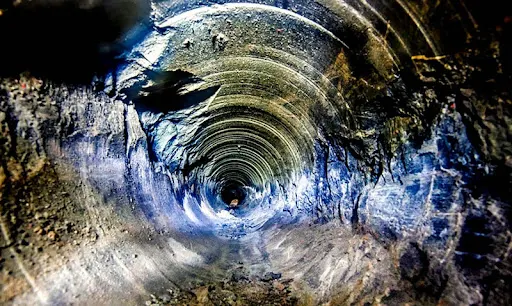The deepest hole on the planet is the Kola Superdeep Borehole, located on the Kola Peninsula in Russia. It reaches a depth of 12,262 meters (40,230 feet), and is the deepest artificial point on Earth.
The borehole was drilled over a period of 20 years, starting in 1970. It was originally intended to reach a depth of 15 kilometers (9.3 miles), but drilling was abandoned in 1994 due to technical difficulties and lack of funding.
The Kola Superdeep Borehole is significant because it is the deepest hole ever drilled by humans, and it has provided valuable insights into the structure and composition of the Earth's crust. However, it has also been the subject of much speculation and mystery.
One of the reasons why the Kola Superdeep Borehole was sealed is because it had become unstable. The borehole was drilled through a variety of different rock formations, and the pressure and heat at the bottom of the hole were so intense that the rock was starting to deform and crumble. This made it difficult and dangerous to continue drilling.
Another reason why the borehole was sealed is because it was becoming too expensive to maintain. The drilling equipment was constantly breaking down, and the cost of replacing it was becoming prohibitive.
In addition, there were some concerns about the environmental impact of the borehole. The drilling process produced a lot of waste and pollution, and there was a risk that the borehole could collapse and release harmful gases into the atmosphere.
Finally, the Kola Superdeep Borehole had become a symbol of the Cold War. It was a race between the Soviet Union and the United States to see who could drill the deepest hole. After the Soviet Union collapsed in 1991, the borehole was no longer a priority for the Russian government.
In 2005, the Kola Superdeep Borehole was sealed with a metal lid. It is now a popular tourist destination, but visitors are not allowed to go inside.
Why is it important to seal the deepest hole on the planet?
There are a few reasons why it is important to seal the deepest hole on the planet.
Safety: The Kola Superdeep Borehole was becoming unstable due to the pressure and heat at the bottom of the hole. This made it difficult and dangerous to continue drilling, and there was a risk that the borehole could collapse.
Environmental impact: The drilling process produced a lot of waste and pollution, and there was a risk that the borehole could collapse and release harmful gases into the atmosphere.
Cost: The cost of maintaining the borehole and replacing the drilling equipment was becoming prohibitive.
What have we learned from the Kola Superdeep Borehole?
The Kola Superdeep Borehole has provided valuable insights into the structure and composition of the Earth's crust. Scientists have learned that the Earth's crust is much thicker than previously thought, and that it is made up of a variety of different rock formations.
The borehole has also revealed the presence of water and gas deep beneath the Earth's surface. This suggests that the Earth's crust is more dynamic than previously thought, and that it may play a role in the Earth's climate and tectonic activity.
Conclusion
The Kola Superdeep Borehole is a remarkable feat of engineering, and it has provided valuable insights into the Earth's crust. However, it is also a reminder of the dangers and challenges of drilling to such great depths.



